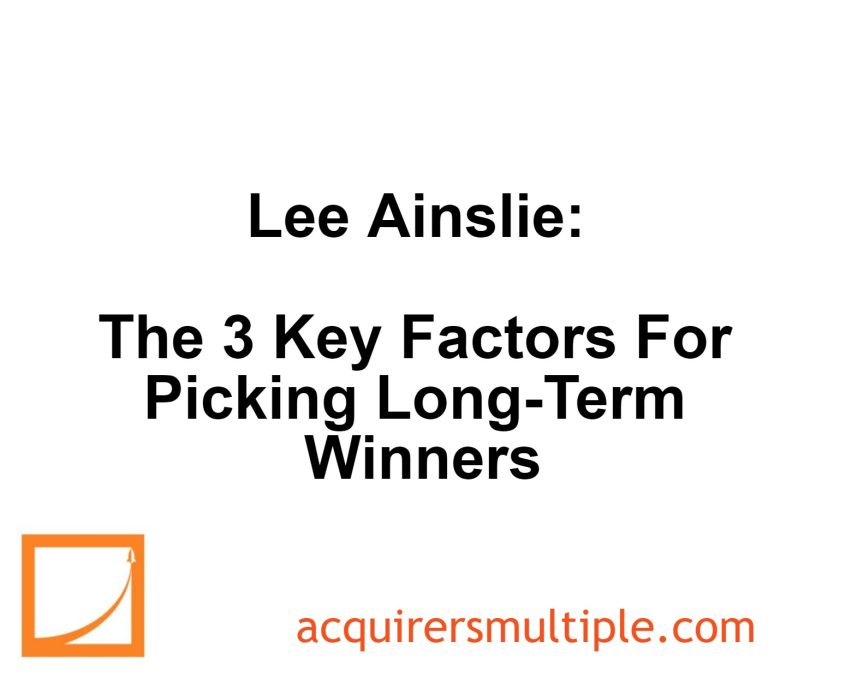In his interview in the book – Lee Ainslie describes his investment process as forward-looking, focusing on identifying future winners and losers in each industry. The firm’s deep due diligence is enabled by a low ratio of positions to professionals, allowing constant updates on industries and spotting new opportunities.
Ainslie highlights three key factors in long investments: management quality, business quality, and valuation. He prioritizes strong leadership, persistent cash flow, growth drivers, and a deep understanding of competitive dynamics.
For valuation, Maverick primarily compares sustainable free cash flow to enterprise value, tailoring different methodologies to specific circumstances for more accurate assessments.
Here’s an excerpt from the book:
Ainslie: To oversimplify, we are really trying to look out two or three years in every industry in which we invest, trying to identify who’s winning and losing, and, perhaps most importantly, recognize the discrepancies between our view and the view of the markets.
We have a very deep and thorough process. I think we’re unusual in that our typical ratio of primary positions to investment professionals is roughly four to one, which allows an uncommonly deep level of due diligence.
Our process is less about suddenly recognizing a new potential investment that we then investigate, but rather more about constantly updating our strategic views of every industry in which we invest and looking for changes in that competitive landscape that may present new opportunities.
First and foremost, we focus on the quality of management. We work hard to evaluate the management team’s desire to create shareholder value, their competitive drive, their intellect, and their ability to execute. Management is top of the list.
Second is the quality of the business. This includes the persistence of cash flow streams, the drivers and sustainability of growth, and a strong understanding of the competitive dynamics within an industry.
It may sound cliché, but we invest a great deal of time talking to competitors, suppliers, and customers—as well as interacting with as many members of management throughout different divisions and different locations around the world as we can.
Finally, valuation. I think part of the art of being a successful investor is to be very comfortable with a number of different valuation methodologies and to recognize which approach is the most appropriate or most meaningful in a different circumstance.
Having said that, the most common valuation metric at Maverick is the comparison of sustainable free cash flow to enterprise value.
You can find a copy of the book here:
For all the latest news and podcasts, join our free newsletter here.
Don’t forget to check out our FREE Large Cap 1000 – Stock Screener, here at The Acquirer’s Multiple:



